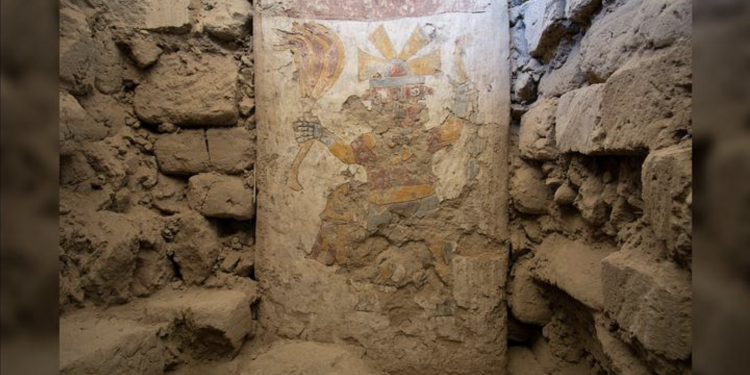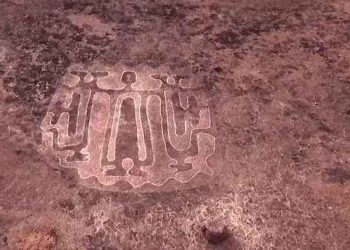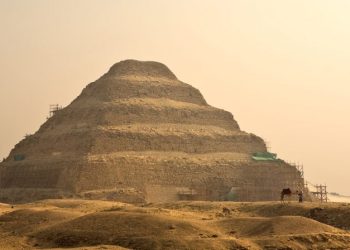Recently discovered at the 1,400-year-old Pañamarca archaeological site in Peru, two captivating murals depict two-faced men holding mysterious treasures. These extraordinary findings offer a rare glimpse into the ancient Moche civilization’s spiritual beliefs and artistic experimentation.
A Rare Find: Murals of Dual-Faced Men
Archaeologists recently uncovered two extraordinary murals at the Pañamarca site on Peru’s coast, dating back to the flourishing Moche civilization between AD 550 and 800. The murals on the same pillar in a ceremonial hall depict two-faced men adorned with headdresses or crowns, elaborate clothing, and sizable belts. The reasons for this unique portrayal remain a mystery. According to Lisa Trever, an associate professor of pre-Columbian art history and archeology at Columbia University, “There’s nothing like this in South American archaeology.”
Artistic Experimentation and Movement
Both murals are rich in detail, with one man holding a feathered fan and a goblet filled with hummingbirds, while the other carries a moving feathered fan and a partially preserved stick-like object. Researchers believe that the Moche artists may have been exploring ways to depict movement and simultaneous narrative moments in their artwork.
The Enigmatic Moche Civilization
The Moche civilization, known for its impressive temples, human sacrifice rituals, and intricate artwork, thrived along Peru’s coast before the introduction of a writing system. While the two men in the murals may represent deities, their entirely human appearance, apart from the two faces, poses a fascinating puzzle for researchers.
The Architectural Complex of Pañamarca
Located in Peru’s lower Nepeña Valley, Pañamarca boasts an array of murals featuring a priestess, a snake, and a bat within the room containing the dual-faced men. Despite over six decades of study since the first mural’s discovery in 1958, archaeologists have yet to excavate much of the room, suggesting more murals may still be waiting to be found.
Deciphering the Murals’ Symbolism
Edward Swenson, director of the Center for Archaeology at the University of Toronto, suggests that the dual-faced nature of the men may symbolize mortals wearing masks to impersonate or become supernatural beings. The hummingbirds drinking from the cup could signify a vital connection between mortals and gods, emphasizing the importance of sacrifice in the Moche worldview.
Continuing the Exploration
The team of archaeologists will resume fieldwork at Pañamarca this year, continuing to uncover the mysteries of the Moche civilization and further unravel the cosmological meanings and religious narratives behind their enigmatic iconography.
PLEASE READ: Have something to add? Visit Curiosmos on Facebook. Join the discussion in our mobile Telegram group. Also, follow us on Google News. Interesting in history, mysteries, and more? Visit Ancient Library’s Telegram group and become part of an exclusive group.











